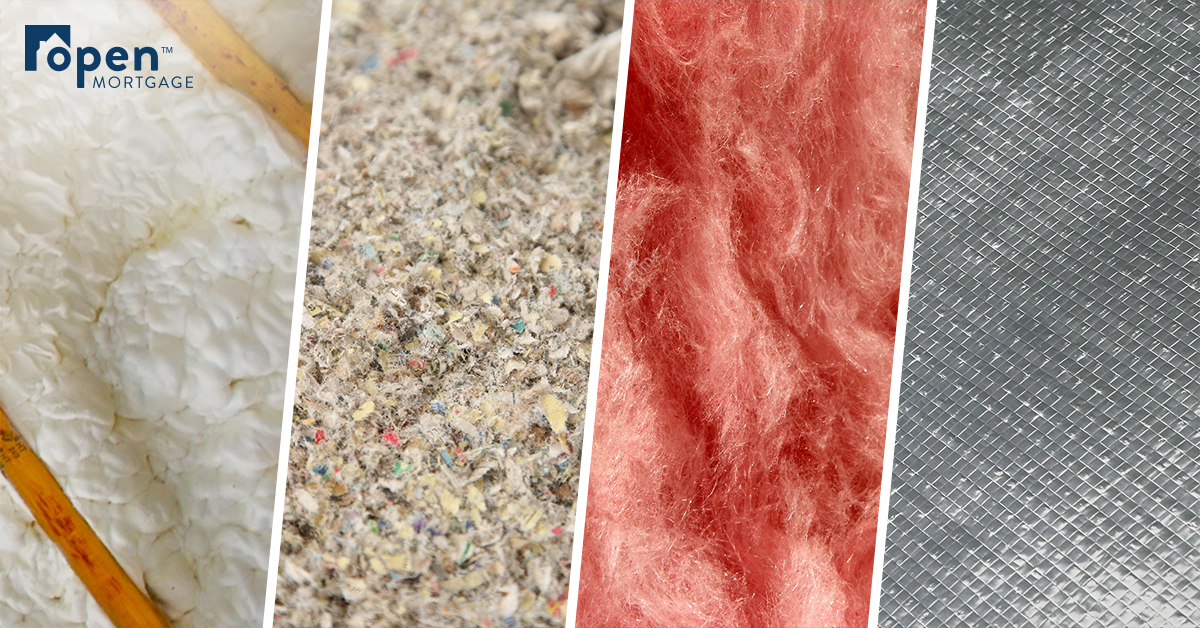
Choose Wisely When You Insulate Your Home
For homebuyers, your mortgage payment is one of several monthly costs you’ll have to pay. Other monthly costs include your property taxes, homeowners insurance, and homeowners association (HOA) fees.
On top of these, homeowners can expect a substantial monthly power power bill. In the summer of 2017 alone, the average American household faces a $410 monthly electricity bill, primarily from using air conditioners.
Adding insulation can lower your power bill
By adding home insulation, you can significantly lower your summer power bill (and lower your winter heating bill), keep your home more comfortable, and make your home healthier.
Insulation prevents homes from leaking air, especially through through the roof, walls, and around windows. By adding insulation to your home, you’ll reduce the energy needed to power your heating and cooling appliances, and can significantly lower your power bills.
With 90% of American homes estimated to be under-insulated, nearly every homeowner can benefit from this cost-effective step.
A range of insulation types are available
When you add home insulation, you’ll choose from a range of insulation materials. Each material has distinct qualities and attributes.
During this process, you can expect to hear the term R-value. “R” means resistance to heat flow. The higher the the insulation material’s R-value, the greater its insulating power. Almost all insulation products are required to list their R-value.
Here are the four main types of home insulation:
Spray Foam
With spray foam, liquid polyurethane is sprayed into the cavity of your wall, where it hardens and transforms into a solid foam.
Effective at sealing leaks and gaps inside existing walls, spray foam is a relatively inexpensive way to to increase your home’s R-value.
When installed properly, spray foam can save you as much as $500 a year in energy costs
Blown-In
With blown in insulation, a mechanical blower is attached to a box of cellulose made from recycled newspapers and cardboard. The user points the blower where they want their insulation to go and fills the space with cellulose.
Blown-in insulation has been available for decades, has a higher than average R-value, and is one of the most affordable types of insulation.
Fiberglass Batts
Fiberglass batts are the cheapest and easiest way to insulate new walls. With this insulation method, large, rolled batts of fiberglass are installed between walls to stop air from penetrating the exterior wall.
Ideal for those wanting to insulate quickly and save money, fiberglass batts can improve your home’s energy efficiency by 25% to 30%.
Reflective or Radiant Barrier
Typically installed in attics to reduce summer heat and insulate against winter cold, reflective and radiant barriers are excellent at reducing heating and cooling bills, while increasing your home’s R-value.
The barriers consist of a highly reflective material that reflects heat rather than absorbing it.
Reflective and radiant barriers work better in warmer climates, and can reduce cooling costs by around 10%.
Research insulation types carefully
Adding insulation to your home is one of the most cost-effective investments you can make. But because of the range of insulation types available, it’s important do your research before committing to a particular type.
The HouseLogic website provides helpful information on the different types of home insulation.
If you’re interested in buying a home, contact one of Open Mortgage’s friendly loan originators.





